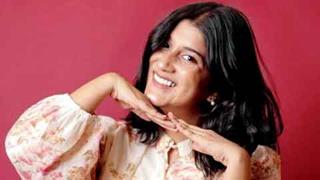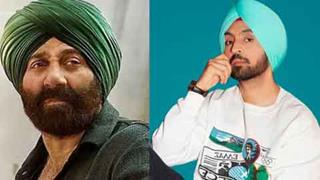There was a time when viewers would burst out of movie halls mimicking one liners like "Mogambo khush hua..." or "Aray O Sambha!" as villains from Hindi films successfully left their image tattooed on people's minds. But these larger-than-life characters are getting rarer now in new age cinema.
With a gradual shift in moviemaking to a more realistic sphere over the years, an actor who would otherwise play only the stereotyped villain in a movie has lost his screen space owing to mainstream actors playing roles with negative shades.
"Earlier, movies were all morality tales that meant to have a good guy and a bad guy and preached that good must prevail over the bad. But now we are making films that are closer to life, " renowned filmmaker Shyam Benegal told on phone from Mumbai.
"Now the characters are realistic - the good is not that good that it has no bad in it and vice versa. Instead, the characters now have shades of grey that vary from light grey to dark grey depending upon the script. You might not call them villains but anti-heroes today, " Benegal added.
Anupama Chopra, film critic and consulting editor (films) in NDTV, echoed similar views.
"We are no longer in only the black and white realm of Bollywood where there used to be just two shades - a character could be either good or bad.
"Movies now are more realistic and have more colour elements to the character. It's also beneficial for the actors to delve into different shades, which was not the case earlier, " she said.
Picking up from the wicked village zamindar to the sophisticated smuggler and black-marketer, Bollywood villains evolved to categories of stubborn parents, mastermind scientists, dacoits and psychological perverts.
Bollywood baddies' screen presence became larger than life during the 1970s and 1980s when they epitomised negative characters on screen in roles like Shakal (Kulbhushan Kharbanda) in "Shaan", Mogambo (Amrish Puri) in "Mr. India" and Dr. Dang (Anupam Kher) in "Karma".
Actors like Kanhayalal, K.N. Singh, Anwar, Madan Puri, Prem Nath, Utpal Dutt, Pran, Ajit, Amrish Puri, Rahman, Jeevan, Prem Chopra, Kulbhushan Kharbanda, Kadar Khan, Anupam Kher, Amjad Khan, Ranjeet, Sadashiv Amrapurkar, Paresh Rawal, Shakti Kapoor and Gulshan Grover carved a niche for themselves as big screen villains.
However, they got replaced by mainstream heroes, courtesy experimental movies. Superstar Shah Rukh Khan rose to fame with negative roles in films like "Baazigar", "Darr" and "Anjaam".
Filmmaker Ramesh Sippy, whose "Sholay" gave the Indian celluloid its biggest ruthless villain in Gabbar Singh, supports the change.
He said: "Things have to change with the passage of time. Earlier, a villain was only a villain. But it need not be the same loud and melodramatic character today. As we are getting closer to reality in moviemaking, people are open to change. It's not that there are no negative characters now, but the shades of the character have changed."
New cinema also saw actors like Arjun Rampal, Fardeen Khan, Ajay Devgan, John Abraham, Hrithik Roshan and Akshaye Khanna play both positive as well as negative characters.
In the past, heroes like Bollywood thespian Dilip Kumar and evergreen superstar Dev Anand were occasionally seen in negative roles in "Aan" (1952) and "Bombai Ka Babu" respectively. Megastar Amitabh Bachchan too did not shy away from portraying a cold-blooded murderer in "Parwana" (1971). But it never became a trend.
Commenting on this change, yesteryears villain Prem Chopra said: "The traditional and conventional villains no longer exist because the whole scenario and concept of scripts have changed. They are making different kind of cinema now."
"But negative characters have not been completely eradicated. They are present in movies but with different shades. Moreover, with the advent of TV, people have become more learned and knowledgeable to appreciate heroes doing even the negative roles."
Chopra's famous line "Prem naam hai mera, Prem Chopra" in "Bobby" (1973) had added a new dimension to devilish roles.
Raza Murad, infamous for his villainous acts in the 1980s films like "Tridev", says the change has narrowed the scope for actors like him.
"The traditional villain has died a natural death. Today even a hero can portray a negative character. There are no lines drawn. The scope for actors like me has gone down, " he said.
Iconic villains fade away in times of experimental cinema
Saturday, November 22, 2008 11:44 IST


















